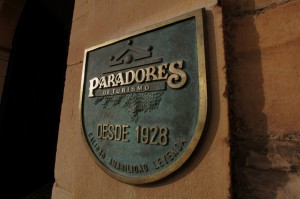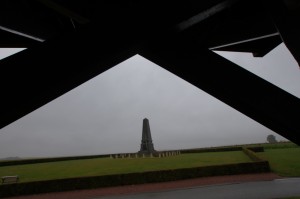After experiencing the wonders of Gaudi’s Barcelona we decided to see the city from a different perspective and climbed both Montjuïc and Mount Tibidabo. They are on opposite sides of the valley and the views give you an excellent understanding of the city’s layout.
We then drove along the coast to Tarragona, past the Roman aqueduct and on to Tortosa to start our Paradore experience.
The first Spanish Paradore was opened by King Alfonso XIII in Gredos, Ávilia, in 1928.
There are now over 90 of these luxury hotels spread over Spain and the Canary Islands.
There are even some in North Africa.
Many of the hotels are in former palaces, fortresses, castles, convents and monasteries.
Being built in either public or religious buildings, a large number of Paradores occupy the high ground.
Our first night was in Paradore Tortosa.
This hotel is in a converted 10th century castle, it dominates the skyline and sits proudly over both the town and the river below.
The Gothic Cathedral of Santa Maria of Tortosa has a flat roof, this is very evident when you view it from the the Paradore above. Inside you wouldn’t know, as it has all the arches and vaults of a traditional Gothic Cathedral.
Apparently many churches were built with this flat roof style.
From Tortosa we drove via Valderrobres to Paradore Alcaniz, formerly a 12th Century Castle housing the convent of the order of Calatrava in Teruel.
We took the tour of the castle, not knowing it was only in Spanish, then tried as best we could, to understand what was going on.
It was a good lesson in what it’s like for tourists who don’t have a narration in their native tongue, or English as a second language.
We did learn, mainly from the leaflet that was in English, that these Gothic wall paintings are unique, in that they show civil scenes as well as conquests and religious themes.
The next day we went via Lleida to Cardona.
The Cathedral at Lleida also has a flat roof but again you wouldn’t know if from the high, lofty interior.
The Paradore ‘Ducs de Cardona’ is built in a ninth century castle with a tower dating from the second century.
It was the most spectacular of the three we visited.
There is a long, steep, winding driveway that takes you to the top of the hill and the Paradore. From there you have an commanding view of the town and the salt mines that have made the area famous.
It is estimated that the mountain of salt, that is opposite the hotel, is 2km deep.
We drove down into Cardona in the evening and were lucky enough to capture the sun setting on the Paradore high up on the hill.
On the way back to Barcelona we climbed the 9km of winding road to visit Monserrat.
The weather had turned stormy and the clouds hung low over the mountain, creating an erie backdrop to the monastery.















The beauty is in the detail. (October 2012)
Wednesday, October 24th, 2012Barcelona owes a large debt to Antoni Gaudi.
It’s October and the crowds are still flocking to see what this genius of Art Nouveau architecture has done to churches, parks and private property.
I first visited Barcelona in 1972, Franco was in power and the Sagrada Família was a fraction of the size it is today. It has been under construction since 1882 and not due to be completed until 2026, the centennial of Gaudi’s death.
I visited again in 2005 and the workers were still there.
They are still there today however the interior is almost compete and it has now been consecrated.
What struck me most this time was the detail of the interior. The organic nature of Gaudi’s initial Nouveau designs have been echoed in every aspect.
The exterior view is still marred by cranes and scaffolding but it’s the interior that gives you an insight into Gaudi’s vision.
On the same day we also visited Casa Milà or La Padrera, an innovative example of domestic architecture, designed by Gaudi and built in 1912.
He even included an underground car park.
Again I was taken by the detail of the interior. There seems to be no angular surfaces and everything has a fluidity.
Inside La Padrera is a museum that illustrates how Gaudi, influenced by nature, approached his designs in an organic rather angular way.
Posted in Architecture, Comment | No Comments »